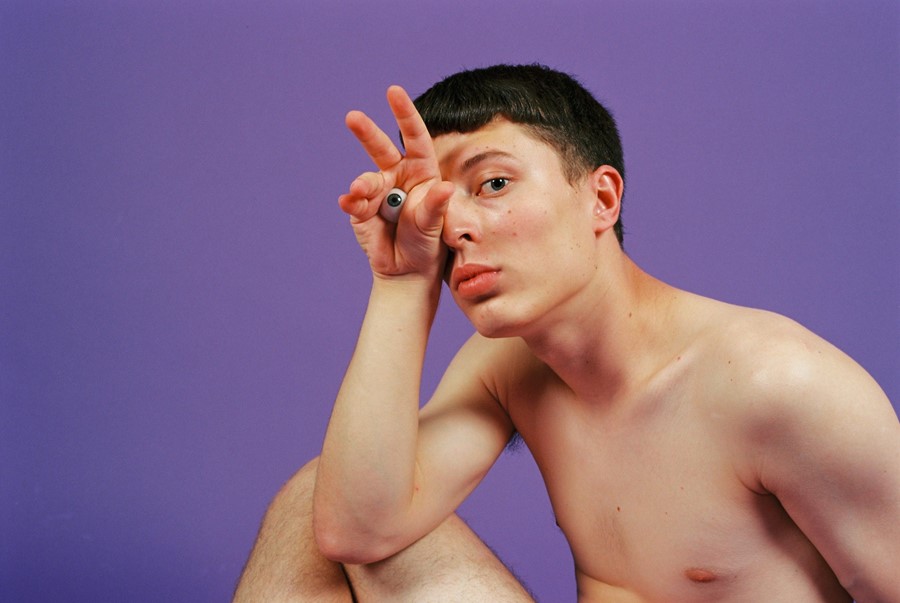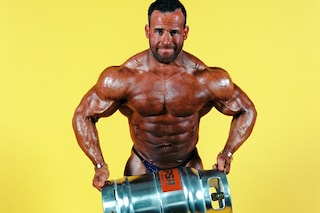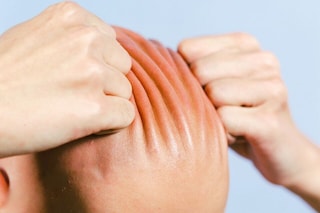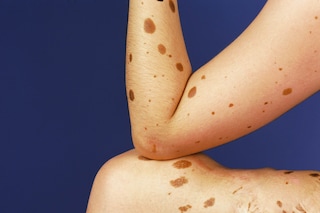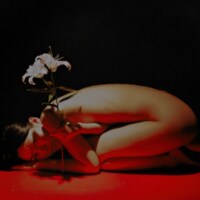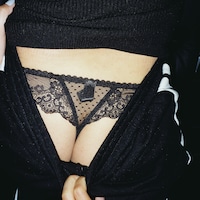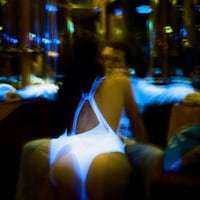Photographer Francesc Planes shares the stories behind the models who feature in his latest project, ‘Normal’
As an art, photography can be a means of processing turbulent experiences and personal struggles. For 22-year-old Francesc Planes, taking photographs has been a way to satisfy his irresistible curiosity to explore untold, often taboo desires – nudism, crossdressing or staring at strange bodies – while also releasing the anxiety that arises from such voiceless fascinations. His new project, Normal, sets the focus on marks, hair, and moles; portraying a cast of eye-catching, unusual bodies that seldom get to pose for the lens. Against a stripped-down backdrop, Planes
conveys “beauty without pretention” and inevitably, questions social conventions around gender, race and/or disability.
Amid countless areas of interest, he mentions anthropology and the photographs that doctors used to take of their patients during the early 20th century. The key to producing something worthwhile, he claims, is “to be able to project a bit of everything you like into your work.” He adds, “Skin, penises, vaginas… They’re things that we don’t show because of shame or fear of rejection. But everyone’s body is different and special.” Accompanying unseen photographs, we spoke with Planes about his approach and ambitions before hearing the stories behind some of his portraits.
“I wanted them to be naked because it’s the purest way of portraying them – stripped of context” – Francesc Planes
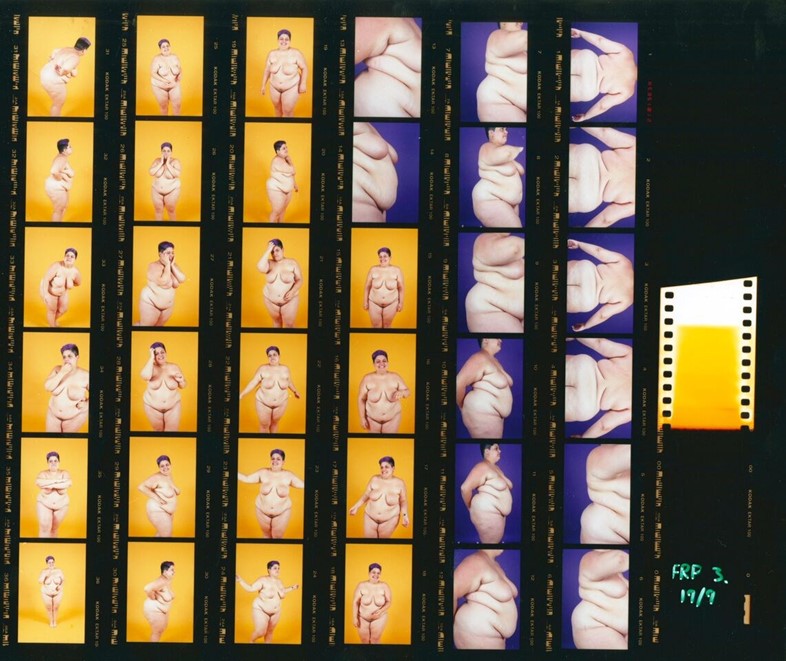
When did you start taking photographs?
Francesc Planes: Three years ago. I took painting lessons as a child and I’ve always been interested in the art world. For some time, I stopped creating stuff and I had no medium for expressing myself – I felt a bit empty. I was interested in photography but had no technical knowledge. Then I went travelling and felt the need to capture what I was seeing around me, so I got a disposable camera from a corner shop and that’s when it all started. I found my father’s old film camera and started taking photos for fun. I took a lot of photographs of my grandma. I didn’t feel like asking models or people I didn’t know if they could pose for me because I had no idea what I was doing. So I played around with my camera and my grandma modelled for me. Later on, I started posting my photos online and meeting people.
Your new project, “Normal”, celebrates bodies that are generally considered strange, ugly or abnormal. Where does your interest in this subject come from?
Francesc Planes: I’ve been interested in this theme since I was little. I was fascinated by things that were different, unknown, and wanted to experience them from up-close.
“There are people out there who still don’t accept that she can love herself the way she is” – Francesc Planes on model Tess
Why was it important that the models pose naked?
Francesc Planes: The importance of the project lies in the subjects’ bodies, faces, attitudes, and stories. I wanted them to be naked because it’s the purest way of portraying them – stripped of context. Using colourful backgrounds helps me decontextualise them. I want the viewer’s attention to focus on the subject and the way I portray them and nothing else besides that.
Are you trying to get a message across with this project?
Francesc Planes: No. I started taking these photographs with the sole purpose of sharing my concerns and portraying things that I liked. I think the photos speak for themselves and the message depends on who is looking.
How do you choose your models?
Francesc Planes: I pick the models very intuitively, it’s easy. I might notice a very characteristic trait, a style or something that I like about someone and approach them. I’ve reached out to most of the subjects through Instagram but I’ve also found models by asking my friends or approaching people in the streets. But that’s generally a lot more difficult. I normally focus on their physical appearance because it’s what I first see through my eyes and at the end of the day, what I transmit through images, but I’m also fascinated by the story behind their body. I’ve shot all of the photographs between Valencia, Barcelona and Madrid. I fill up a big car with studio backdrops, flashes etc. and go to the city. I rent an Airbnb with a big living room, move all the furniture around and set up a studio there. I stay in the city for a few days and spend the whole day taking photos.

Talk me through the typical photo shoot. How do you get your models comfortable?
Francesc Planes: I try to get to know them a bit more before the photoshoot, have a chat and connect a bit. I try to explain what I’m specifically looking for and what the vibe is or the type of photographs I want to make. It feels quite spontaneous and natural. Sometimes I make them shout to loosen up. I tell them to play.
A lot of the stories behind the portraits describe a personal process of learning to love oneself in spite of the shame or discrimination around one’s body. Do you think that taking photos can help to accept oneself?
Francesc Planes: The people who appear in the project have been discriminated against for the simple fact of being different or not like everyone else. I think taking photos of oneself and being comfortable with oneself can make people see that being different is good and a reason for celebration rather than condemn.
How did people react to your project? Both IRL and URL.
Francesc Planes: The reception has been good. The photos have caught attention from many foreign media outlets and they’ve reached people abroad. I’ve read comments of people criticising my decision to include photos of people with tattoos because some website said my photos were about people who had been bullied. I am not really talking about people who have been bullied. It’s more diverse than that. People covered in tattoos are also judged for their physical appearance. But just like when you dress as a woman or wear makeup, it’s just a way of expressing oneself. People who have seen my work have had all sort of emotional reactions – sometimes they’re surprised, or disgusted, they feel pity, they laugh…
Who would you like to photograph? Are you currently looking for new faces and stories?
Francesc Planes: Yes, I’m continuing the project and am looking for people. I have to do some travelling for it so it’s going to be more time and money-consuming. I would like to do some sort of documentary video in relation to the project and put together a book.
Besides ‘Normal’, are you working on any other project?
Francesc Planes: I’ve been travelling to Algeria for a few years now for a documentary project. I’m also currently working on a project similar to ‘Normal’ but in which the art direction is more central.
“I think the photos speak for themselves and the message depends on who is looking” – Francesc Planes
IME
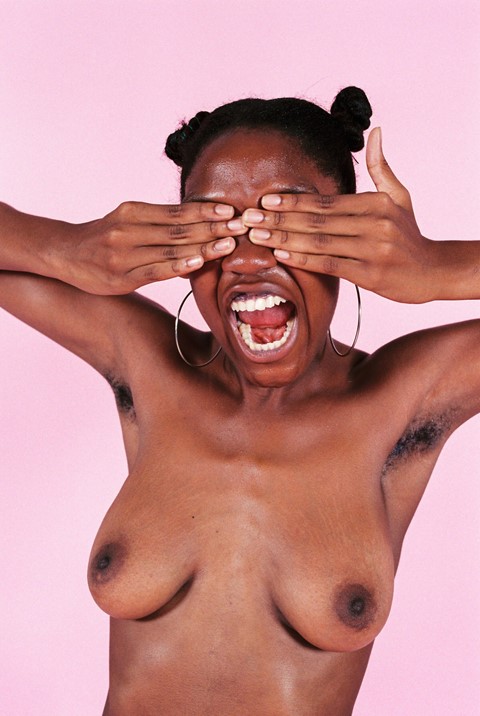
“This is one of the first photos I took when I didn’t know what direction I’d be taking with the project. The first photos were about shooting naked bodies playing. The idea was to use the body as the only way to get a message or feeling across, without props, decor, or anything. I wanted Ima to be bold and carefree in front of the lens. After the shoot, she was flat-hunting and a landlord she had contacted saw this photo as her profile picture on her WhatsApp and saw that she was Black. They said, ‘Sorry but we don’t accept Black people’. The landlord refused to rent her flat to her just because she was Black – I couldn’t believe it.”
ALBA

“Alba suffers from a rare disease called Melanocytic Nevus. Her body is covered with moles and dark patches of hair. She told me, ‘My ex-boyfriend told me I shouldn’t show my back to anyone because he doesn’t want to have a misshapen girlfriend’.”
EL PINCHO
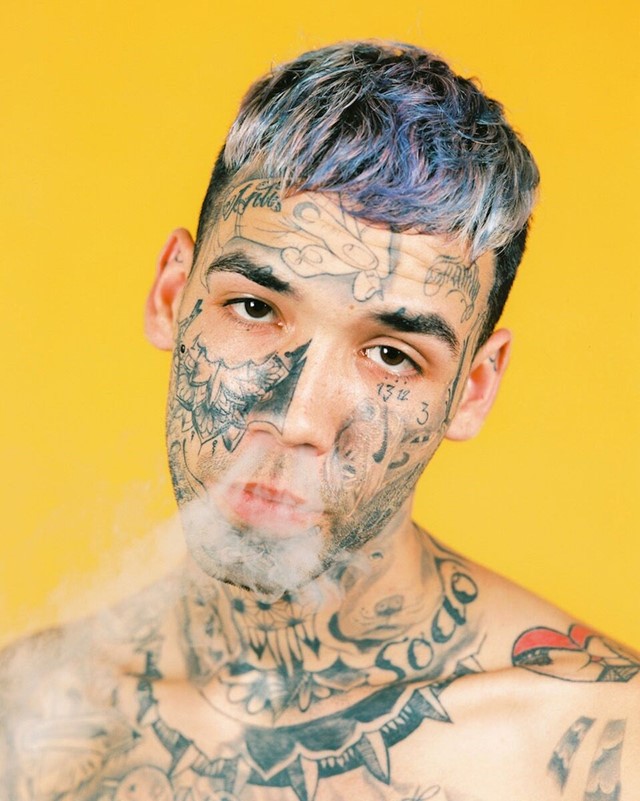
“El Pincho started getting tattoos when he was 11 because his brother was a tattooist. He gets judged daily for his tattoos... there are places he can’t enter because of it, like clubs, for example.”
TESS
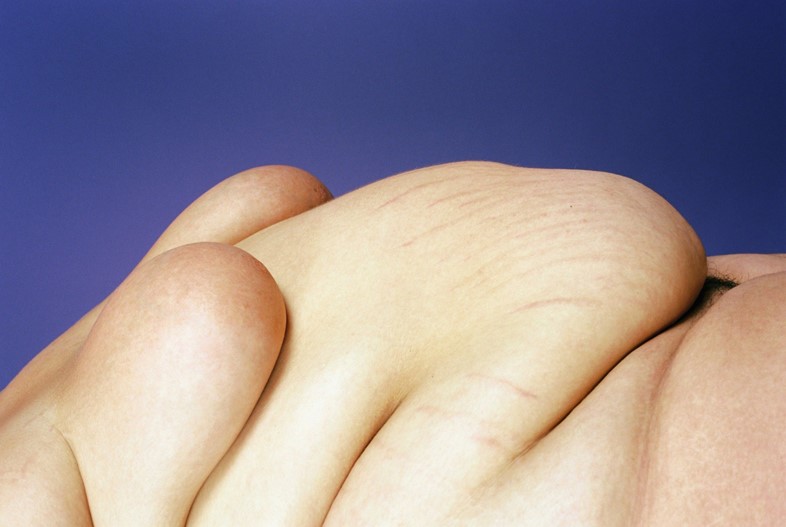
“Tess has been humiliated and laughed at because of her body shape. Throughout the years, she has learned to love herself and now she uploads body positive photos to social media. There are people out there who still don’t accept that she can love herself the way she is. When she uploaded the photograph I took of her to Twitter, someone made a photomontage of her looking for food inside a refrigerator.”
JORDI
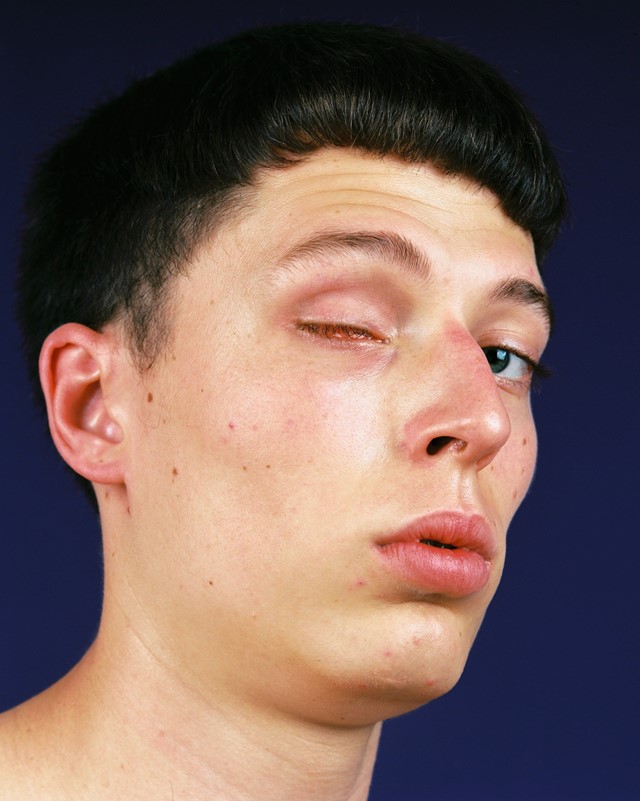
“Jordi developed a tumor in his right eye when he was a child and the only option available was to remove the entire eye. After losing his eye he stopped taking photos of himself because he didn’t like the way he looked. He has just recently started accepting it and tries to help young people be comfortable with themselves. He is a monitor at an after school club. His experience has helped him deal with pain in a different way. He told me: ‘Society has a tendency to victimise people who have diseases. I am trying to be an example of how to overcome that and make people see that illnesses or disabilities shouldn’t be a source of trauma and no one should treat you differently for it’.”
LASTRE
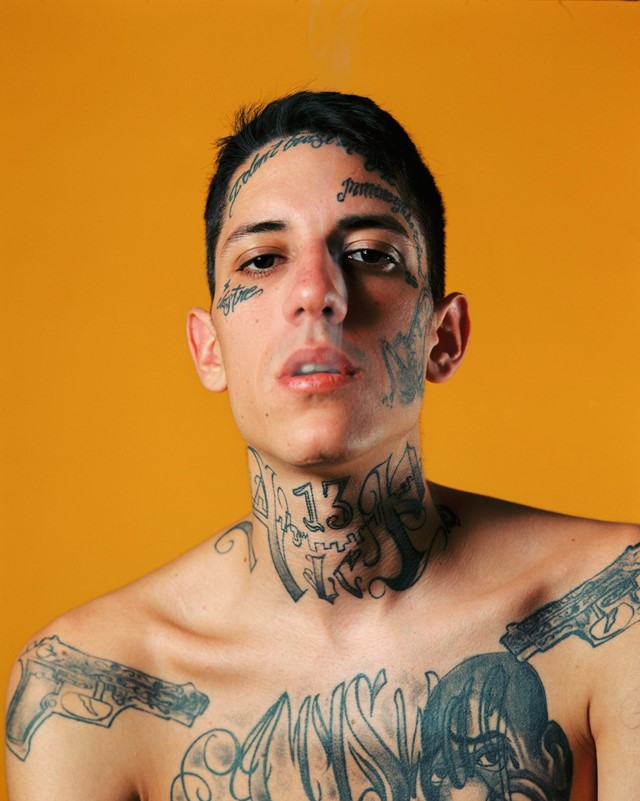
“Lastre is a former member of a Latin gang. He is Spanish but spent his teenage years in Latin America for family reasons. He lived in a marginal neighbourhood and hung out with boys that had tattoos, so he started getting tattoos himself. A few years ago he came back to Spain to change his life and now he works as a tattooist.”
GUILLE
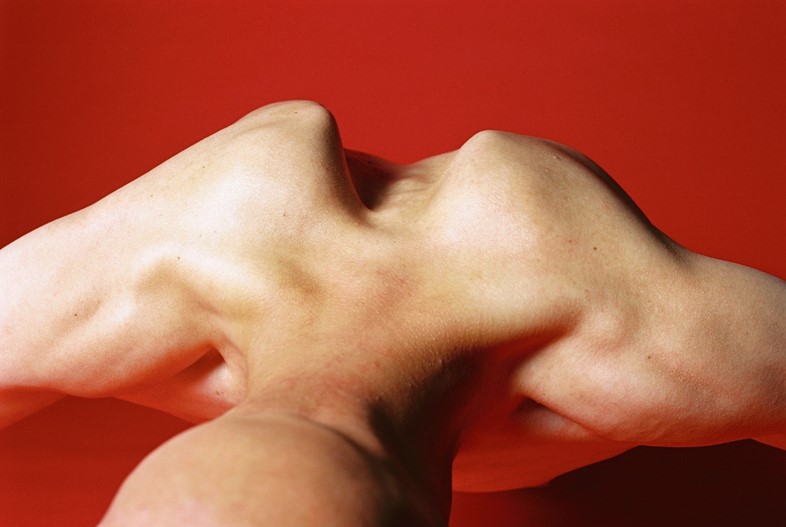
“As a child Guille suffered from an illness that caused him to lose all of his hair, but he has to learn to love himself the way he is. People sometimes ask him how chemotherapy is going.”
